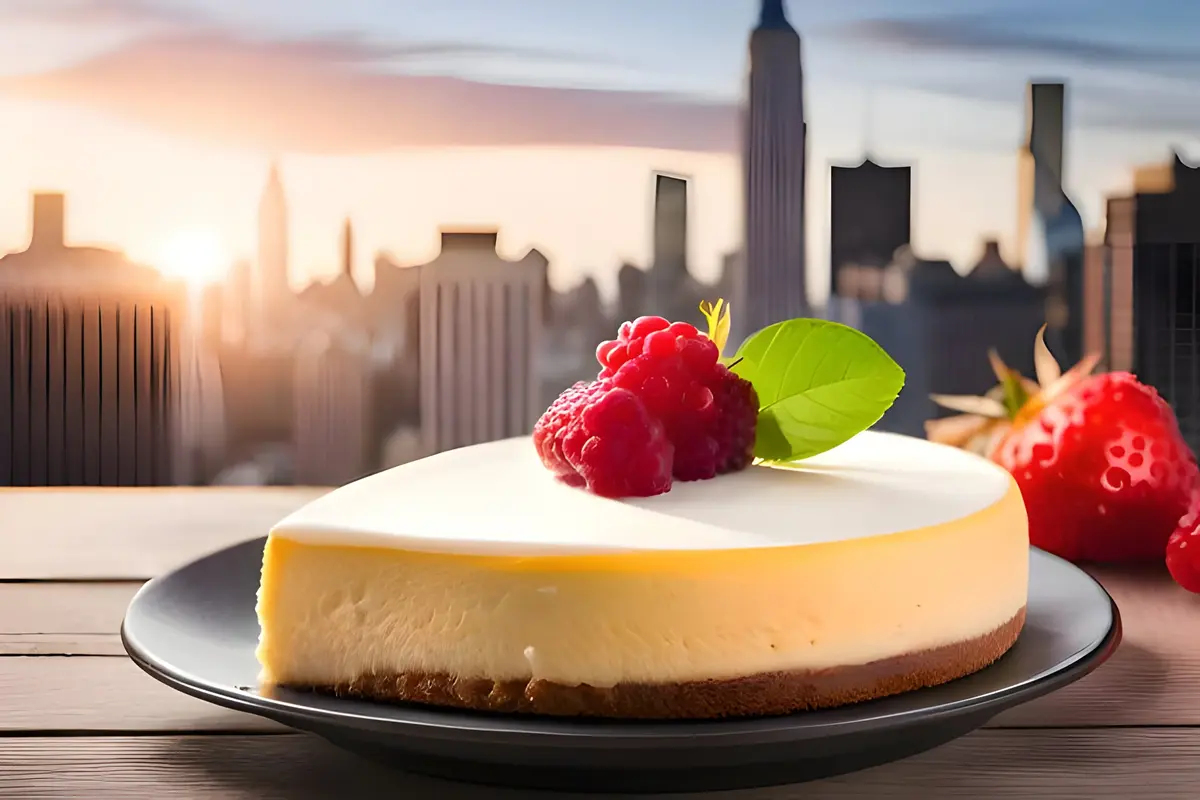Introduction to Cheesecake Varieties
In the world of desserts, cheesecake stands as a testament to culinary versatility and global appeal. With its origins tracing back to ancient times, this beloved treat has evolved into numerous styles, each reflecting the unique flavors and traditions of its region. Among the myriad of variations, French style and New York style cheesecakes emerge as distinct favorites, captivating the palates of dessert aficionados worldwide. This article embarks on a gastronomic journey to explore the difference between French style and New York style cheesecake, shedding light on the nuances that make each variant a masterpiece in its own right.
At the heart of this exploration lies a curiosity about what sets these two styles apart. Is it the texture, the ingredients, or perhaps the method of preparation that distinguishes the creamy, dense New York cheesecake from its lighter, subtler French counterpart? As we delve into the characteristics of each, we uncover not just the culinary techniques that define them but also the cultural preferences that have shaped their evolution.
The allure of cheesecake
The allure of cheesecake, in its many forms, transcends borders and generations. Whether it’s the rich, indulgent slices served in the bustling eateries of New York or the delicate, refined portions savored in the quaint patisseries of France, cheesecake remains a universal symbol of joy and celebration. Through this article, we invite readers to join us in celebrating the diversity of cheesecake, discovering the art and science behind the beloved dessert’s most iconic styles.
As we navigate through the creamy layers and crumbly crusts, we aim not only to highlight the difference between French style and New York style cheesecake but also to inspire a deeper appreciation for the craftsmanship involved in creating these culinary delights. So, let us embark on this flavorful adventure, eager to unravel the secrets that make French and New York style cheesecakes enduring favorites in the dessert world.
The Essence of New York Style Cheesecake
New York Style Cheesecake: An Overview
New York style cheesecake, a culinary icon, stands tall and proud in the dessert world. Renowned for its rich, creamy texture, this cheesecake variant offers a taste experience that is both luxurious and deeply satisfying. Unlike its lighter counterparts, New York style cheesecake boasts a dense, smooth consistency, making every bite an indulgent delight. Its flavor, a perfect balance of tangy and sweet, comes from the generous use of cream cheese, enhanced with a hint of lemon zest and vanilla.
The origins of New York style cheesecake trace back to the early 20th century, rooted in the bustling streets of New York City. It was here, amidst the vibrant culinary scene, that this cheesecake version found its fame. Restaurants and delis, most notably Lindy’s and Junior’s, played a pivotal role in popularizing the dessert, turning it into a symbol of New York’s rich gastronomic culture. Today, New York style cheesecake is not just a dessert; it’s a piece of culinary history, cherished by locals and visitors alike.
Key Ingredients and Preparation Techniques
Creating the perfect New York style cheesecake begins with selecting the right ingredients. At its core are:
- Cream cheese, for richness
- Sugar, to sweeten
- Eggs, for structure
- A touch of flour, to stabilize
- Lemon zest and vanilla bean, for flavor
The preparation method is as crucial as the ingredients themselves. Chefs start by blending the cream cheese and sugar until smooth, then gradually add eggs, flour, lemon zest, and vanilla. This mixture is then poured over a crust and baked in a water bath. The water bath, a key technique, ensures even cooking and a smooth, crack-free surface, hallmark traits of a classic New York style cheesecake.
Signature Characteristics
The crust of New York style cheesecake sets it apart from other variations. Traditionally made from graham cracker crumbs mixed with melted butter, it offers a delightful contrast to the creamy filling. This crust is not just a base; it’s an integral part of the cheesecake’s identity, providing a crunchy texture and a buttery flavor that complements the filling.
The texture and flavor profile of New York style cheesecake are what truly define it. Dense yet creamy, rich yet balanced, it strikes the perfect harmony between indulgence and sophistication. The slight tang from the cream cheese, paired with the subtle sweetness and aromatic hints of lemon and vanilla, creates a flavor complexity that is unmatched.
In essence, New York style cheesecake is more than just a dessert. It’s a testament to New York’s culinary excellence, a symbol of tradition and innovation. Through its luxurious texture, rich flavors, and historical significance, it continues to captivate the hearts and palates of dessert lovers around the world.
The Charm of French Style Cheesecake
French Style Cheesecake: A Delicate Delight
French style cheesecake, known for its elegance and subtlety, offers a refreshing contrast to its New York counterpart. This version of the dessert is celebrated for its light, airy texture and nuanced flavors, embodying the finesse of French patisserie. Unlike the dense and creamy New York style, French cheesecake is often softer and more delicate, with a mousse-like consistency that melts in the mouth. The taste, sophisticated and less overtly sweet, owes its complexity to the variety of cheeses used, which can range from the tangy to the subtly floral.
The key to French cheesecake’s unique texture and flavor lies in its choice of cheese. Instead of the traditional cream cheese, French recipes may incorporate softer, cream-based cheeses like fromage blanc or mascarpone. These cheeses provide a lighter, smoother consistency and a refined taste profile. The difference in cheese types not only influences the texture but also introduces a broader spectrum of flavors, from the mildly tangy to the rich and creamy.
Ingredients and Method of Preparation
The ingredient list for French style cheesecake often includes:
- Soft cheese (fromage blanc, mascarpone, or similar)
- Sugar, for a gentle sweetness
- Eggs, to bind and lighten
- Gelatin (for no-bake versions), to set
- Flavorings such as lemon zest or vanilla, for aroma
Preparing French style cheesecake can follow two paths: the traditional baked method or the no-bake option. The baked version involves gently folding the cheese with sugar, eggs, and flavorings, then baking until just set, resulting in a custard-like texture. The no-bake version, meanwhile, uses gelatin to firm up the mixture, offering a light, refreshing alternative ideal for warmer months. Both methods require a delicate touch to preserve the airy texture that French cheesecake is known for.
Distinguishing Features
One of the most notable features of French style cheesecake is its crust—or sometimes, its absence. While some recipes opt for a light, biscuit-based crust, others forego the crust entirely, allowing the creamy filling to take center stage. When present, the crust is usually thinner and less pronounced than in New York style cheesecake, providing just a hint of texture contrast.
The flavor nuances and texture of French cheesecake set it apart in the dessert world. Its lightness, both in texture and taste, reflects the elegance of French cuisine. The subtle sweetness, enhanced by natural flavorings, offers a sophisticated dessert experience that’s both refreshing and indulgent.
In essence, French style cheesecake captivates with its delicate charm and refined flavors. Through its unique ingredients, preparation methods, and distinguishing features, it offers a delightful alternative to the more familiar cheesecake styles, inviting dessert lovers to explore the subtleties of French culinary artistry.
Side-by-Side: French vs. New York Style Cheesecake
When it comes to cheesecake, the debate between French style and New York style is as rich and varied as the desserts themselves. Each brings its own unique qualities to the table, from texture to flavor to the way they’re served. Let’s dive into a comparative analysis to appreciate the nuances that distinguish these two beloved versions.
Texture Comparison
The texture of New York style cheesecake is dense, creamy, and smooth, offering a substantial bite that’s both satisfying and indulgent. Its thick consistency is a hallmark of the dessert, making it a hearty choice for cheesecake lovers. In contrast, French style cheesecake is lighter, airier, and more delicate. Its mousse-like quality provides a melt-in-the-mouth experience that’s refreshingly light, making it an ideal choice for those who prefer a less dense dessert.
Flavor Comparison
Flavor-wise, New York style cheesecake is bold and straightforward, with the tanginess of cream cheese dominating, complemented by the sweetness of sugar and the subtle notes of lemon zest and vanilla. This creates a rich and robust flavor profile that’s as classic as it is delicious. On the other hand, French style cheesecake offers a more nuanced flavor palette. The use of different soft cheeses, such as fromage blanc or mascarpone, introduces a range of subtle tastes, from mildly tangy to richly creamy, often with a less pronounced sweetness than its New York counterpart.
Serving Suggestions
New York style cheesecake is typically served in thick, generous slices, often accompanied by fruit toppings or sauces to balance its richness. Its sturdy texture holds up well to a variety of toppings, making it versatile in presentation. French style cheesecake, with its lighter consistency, is usually served in smaller portions, sometimes without a crust, emphasizing its delicate nature. It pairs beautifully with fresh fruits or a light dusting of powdered sugar, enhancing its elegant presentation.
In summary, while both New York and French style cheesecakes offer a delightful end to any meal, their differences in texture, flavor, and serving suggestions reflect the diverse tastes and culinary traditions from which they originate. Whether you crave the rich, creamy indulgence of a New York style cheesecake or the light, refined elegance of a French style version, there’s a cheesecake out there to satisfy every preference.
Frequently Asked Questions
What makes New York cheesecake different from French cheesecake?
The primary distinction between New York and French style cheesecakes lies in their texture and base ingredients. New York cheesecake is known for its dense, creamy texture, achieved through the use of cream cheese, eggs, and sugar. This results in a rich and indulgent dessert. On the other hand, French cheesecake is lighter and more delicate, often made with softer cheeses like fromage blanc or mascarpone, which lend a smoother, airier consistency. Furthermore, the flavor profile of New York cheesecake is straightforward and tangy, whereas French cheesecake offers a subtler, nuanced taste, reflecting the variety of cheeses used.
Can I use different cheeses for making French style cheesecake?
Absolutely, experimenting with different cheeses is one of the joys of making French style cheesecake. While traditional recipes may call for fromage blanc or mascarpone, you can explore using other soft, creamy cheeses such as ricotta or even a mild goat cheese. Each type of cheese brings its unique flavor and texture to the cheesecake, allowing for a wide range of culinary creativity. It’s important, however, to consider the moisture content and flavor intensity of the cheese, as these can significantly affect the final outcome of your dessert.
How do serving suggestions vary between the two styles?
Serving suggestions for New York and French style cheesecakes reflect their textural and flavor differences. New York cheesecake, with its dense and rich profile, is often served in simple, thick slices, sometimes accompanied by a fruit compote or a drizzle of caramel to complement its tanginess. In contrast, French cheesecake, being lighter and more refined, might be presented in smaller portions, often garnished with fresh berries, fruit coulis, or a dusting of powdered sugar to enhance its delicate flavors. The choice of accompaniment can elevate the cheesecake experience, whether you’re enjoying the bold, creamy richness of a New York style or the subtle elegance of a French style dessert.

